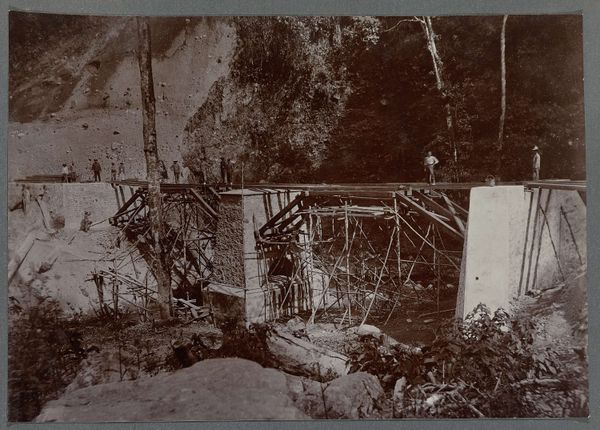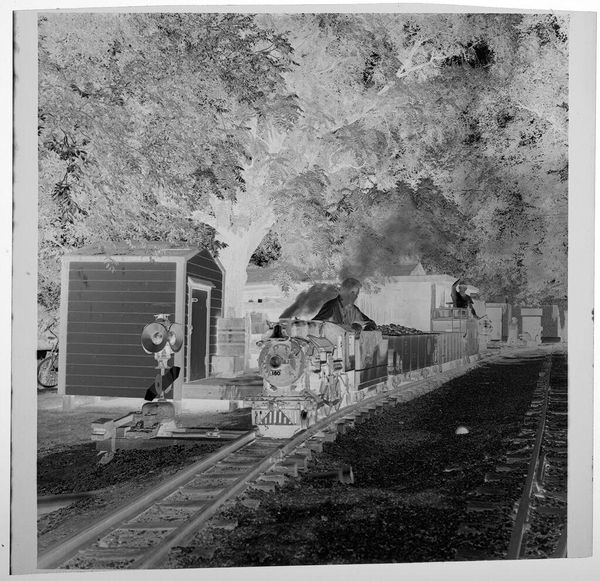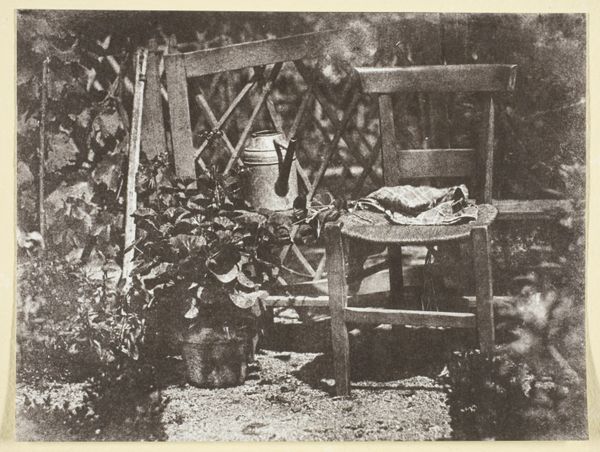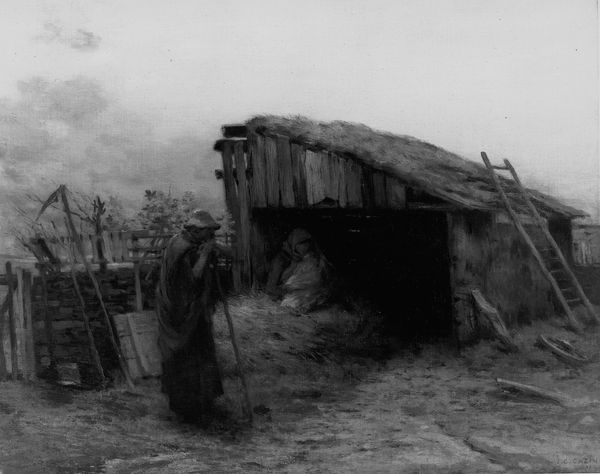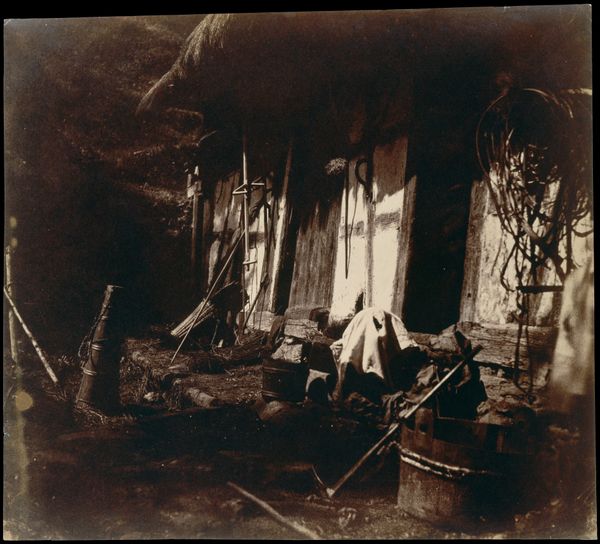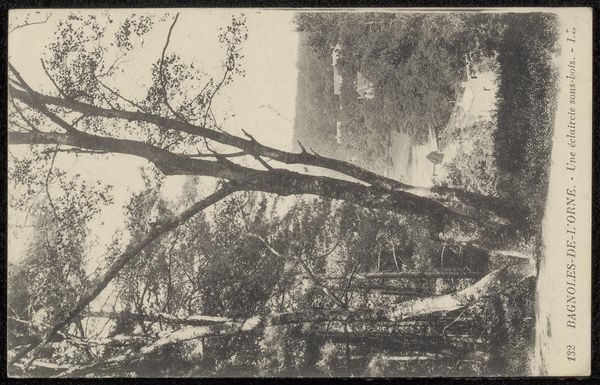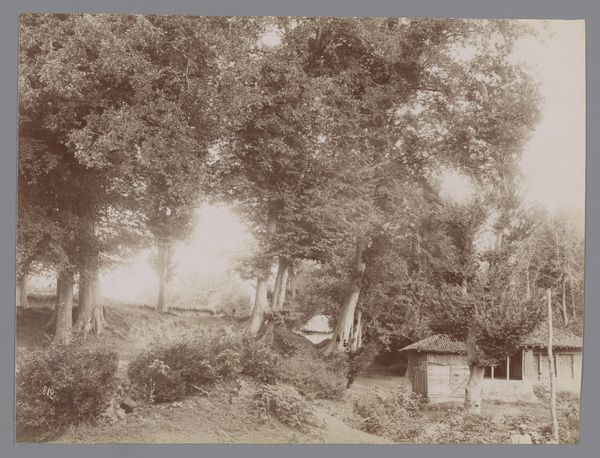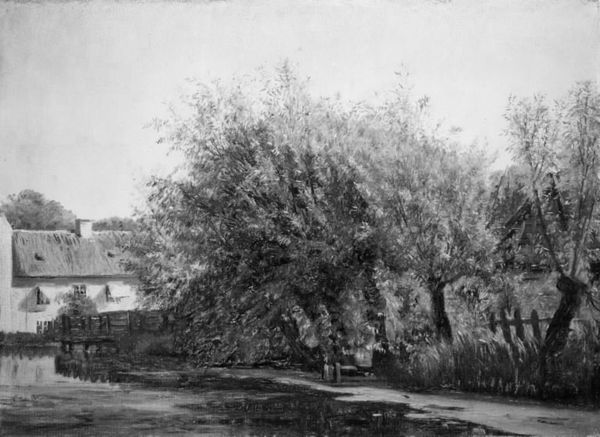
Dimensions: 3 1/4 × 3 1/4 in.
Copyright: Public Domain
Curator: What strikes me first is how Stieglitz manages to make a humble scene so captivating. It's such a tranquil, rural vision. Editor: Tranquil, maybe. But what are we actually looking at? In "Gutach", taken in 1894, Stieglitz presents us with more than just pretty scenery; he showcases the material reality of rural life. Curator: Agreed, although there's a gentleness in its tone. The arrangement of the ducks seems deliberately picturesque, contrasting with the raw texture of the buildings and foliage. It also plays into the Impressionistic style of the piece. Editor: Well, look closer. The choice of black and white—typical of photography at the time—removes any potential for romanticising the landscape. This approach foregrounds the materiality. The texture of the wooden structures. The quality of the light filtered through the tree leaves... these elements dominate and speak to how materials shape life in a community. Curator: Absolutely, but his promotion and exhibition of photography as high art within established institutions significantly elevated its status. This piece in the Art Institute, for example, enters a very specific and influential context. Editor: That’s a key point. How were these kinds of rural scenes viewed in contrast to burgeoning industrialised urban spaces at the time? I think there’s commentary implied about simpler ways of life and pre-industrial labor. The ducks themselves become stand-ins for something larger: sustenance and a closeness to the land. Curator: And yet, it's not overly sentimental. The ducks almost appear utilitarian against the backdrop. There's no real visual hierarchy; everything contributes to the overall composition. It lacks some of the pretension you might find in similar paintings from the period. Editor: Stieglitz captured a scene but also preserved a historical document. Each plank of wood, each element in this photographic print reminds us about labor, environment, and how society shapes both our landscapes and artistic practices. Curator: Considering that this photograph is now enshrined in a major art institution tells a nuanced story about whose voices and which images achieve lasting cultural significance. It pushes me to consider what narratives continue to go untold. Editor: And hopefully, by considering materials, techniques, and the social climate, we see what is communicated at face value, while remaining keenly aware of how labor is documented – or often left undocumented – within it.
Comments
No comments
Be the first to comment and join the conversation on the ultimate creative platform.


